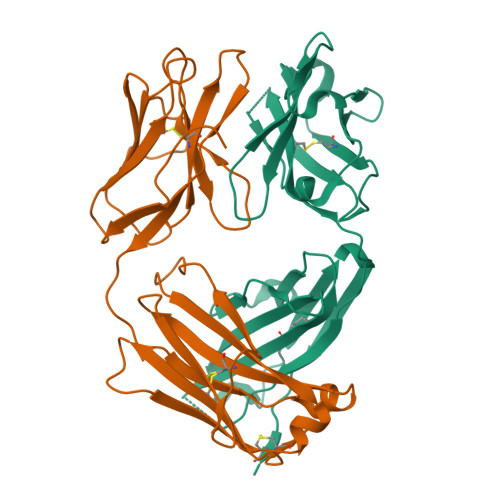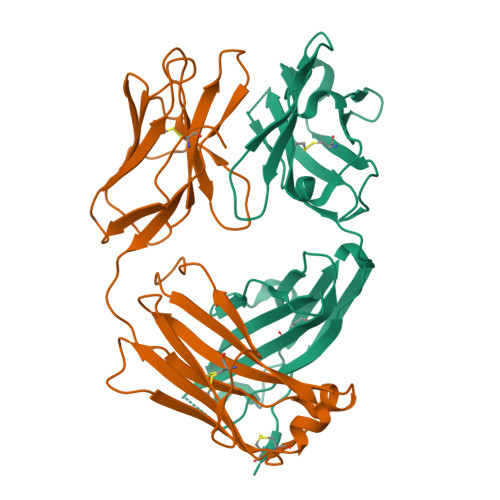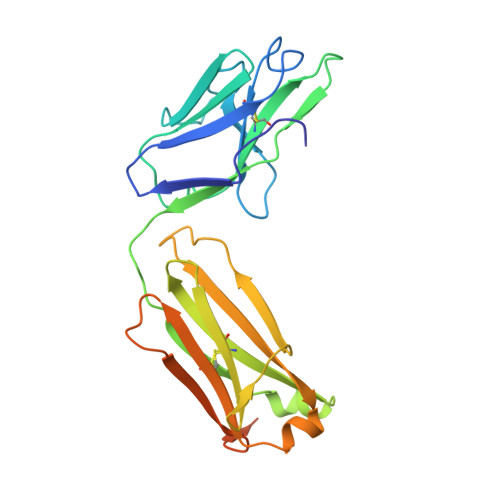Robotic Qm/Mm-Driven Maturation of Antibody Combining Sites.
Smirnov, I.V., Golovin, A.V., Chatziefthimiou, S.D., Stepanova, A.V., Peng, Y., Zolotareva, O.I., Belogurov, A.A., Kurkova, I.N., Ponomarenko, N.A., Wilmanns, M., Blackburn, G.M., Gabibov, A.G., Lerner, R.A.(2016) Sci Adv 2: 01695
- PubMed: 27774510
- DOI: https://doi.org/10.1126/sciadv.1501695
- Primary Citation of Related Structures:
5ADO, 5ADP - PubMed Abstract:
In vitro selection of antibodies from large repertoires of immunoglobulin (Ig) combining sites using combinatorial libraries is a powerful tool, with great potential for generating in vivo scavengers for toxins. However, addition of a maturation function is necessary to enable these selected antibodies to more closely mimic the full mammalian immune response. We approached this goal using quantum mechanics/molecular mechanics (QM/MM) calculations to achieve maturation in silico. We preselected A17, an Ig template, from a naïve library for its ability to disarm a toxic pesticide related to organophosphorus nerve agents. Virtual screening of 167,538 robotically generated mutants identified an optimum single point mutation, which experimentally boosted wild-type Ig scavenger performance by 170-fold. We validated the QM/MM predictions via kinetic analysis and crystal structures of mutant apo-A17 and covalently modified Ig, thereby identifying the displacement of one water molecule by an arginine as delivering this catalysis.
Organizational Affiliation:
Shemyakin-Ovchinnikov Institute of Bioorganic Chemistry, Russian Academy of Sciences, ulitsa Miklukho-Maklaya 16/10, 117997 Moscow V-437, Russian Federation.

















